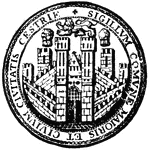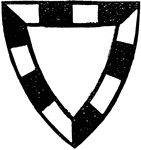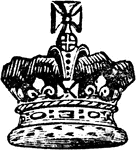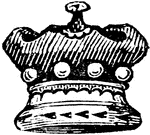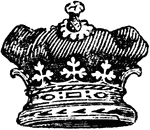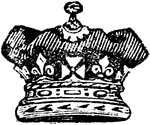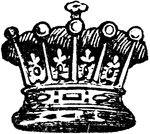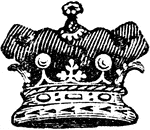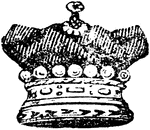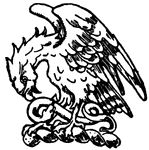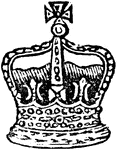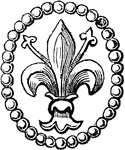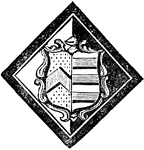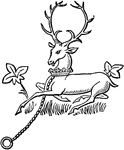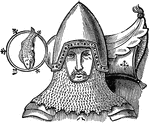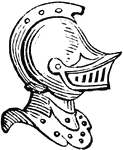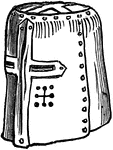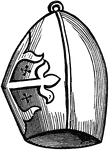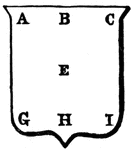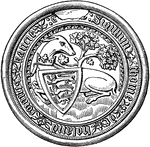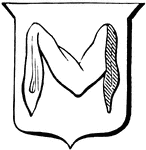This ClipArt gallery offers 82 illustrations of other miscellaneous parts of a coat of arms, including helms, supporters, crests, and coronets.
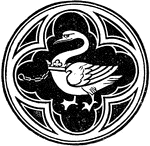
De Bohun Badge
"De Bohun badge. From the central spandrel of the Canopy of the Brass to Alianore de Bohun, Duchess…

Rose and Crown Badge
"BADGE. A distinctive mark worn by servants, retainers, and followers of royalty or nobility, who, being…
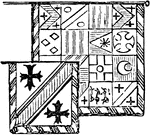
Banner Roll
"BANNER ROLL is a small square flag containing a single escutcheon of the deceased. Thus, if there are…
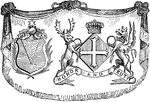
Baron and Femme
"Baron and femme, two atchievements. First, azure, a pile or, crest a star of six points, argent; second,…
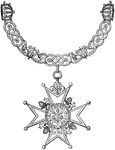
Insignia of the Order of the Bath
"The collar, of gold, in weight thirty ounces, is composed of nine imperial crowns, and eight groups…
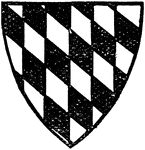
Paly Bendy
"Produced by lines drawn vertically, by others drawn diagonally, or by a compound of Paly and Bendy."—Aveling,…

Chapeau
"CHAPEAU. Cap of maintenance or dignity, borne only by sovereign princes. It is formed of crimson or…
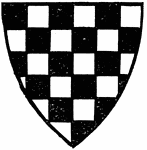
Chequée
"Chequée is when the field is divided by lines perpendicular and horizontal, crossing each other,…
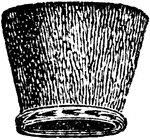
Civic Cap
"CIVIC CAP. A cap of dignity borne by mayors of cities or corporate bodies: it is formed of sables garnished…
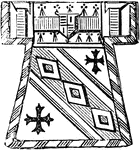
Coat Armour
"COAT ARMOUR, or Surcoat. A loose garment worn over the armour of a knight; hence the term coat of arms.…

Counter-Componée
"Counter-componée has two rows of squares, with a metal and color alternating."—Aveling,…
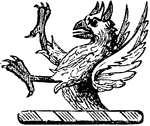
Demi-Griffin Crest
"Crest, a demi-griffin armed, gules. ARMED. This word is used to express the horns, hoofs, beak, or…
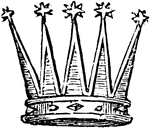
Celestial Crown
"CELESTIAL CROWN. Distinguished from any other crown by the stars on the points or rays that proceed…
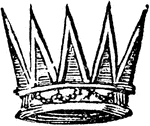
Eastern Crown
"EASTERN CROWN. A crown with rays proceeding from a circle, called by heralds an Eastern crown, is found…

Diadem
"DIADEM, a circle of gold with points rising from it, worn by ancient kings as the token of royalty.…
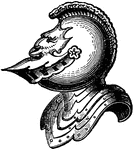
Helm of Esquire
"The Helm of Esquires and Gentlemen has the vizor closed, and is placed in profile."—Aveling,…
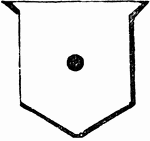
Fess Point
"FESS POINT. The exact centre of the escutcheon, as seen in the annexed example." -Hall, 1862
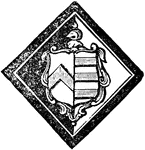
Funeral Atchievement
"The black is left on the dexter side, showing that the husband is deceased, and that his wife survives…
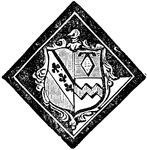
Funeral Atchievement
The image "shows that the husband and his first wife are deceased, and that the second wife is the survivor."…
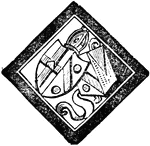
Funeral Atchievement
"The shield on the dexter side of the hatchment is parted per pale; first, the arms of the bishopric;…
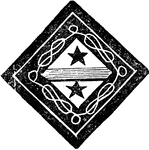
Funeral Atchievement
This image shows "the hatchment of a lady that has died unmarried. The arms of females of all ranks…
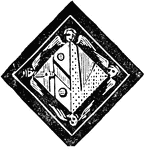
Funeral Atchievement
This image shows "the hatchment of the widow of a bishop; ... here the lozenge-shaped shield is parted…
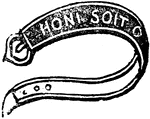
Garter
"GARTER. The insignia of the most noble order of the knights of the garter. It is formed of blue velvet…
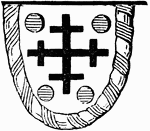
Guidon
"GUIDON. A small semi-oval flag used in funeral processions. It is generally charged with the paternal…
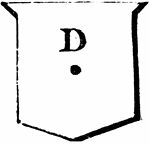
Honour Point
"HONOUR POINT. That part of the shield between the precise middle chief and the fess point. In the annexed…
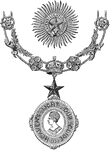
Insignia of the Order of the Star of India
"This Order was instituted by Her Majesty the Queen, in the year 1861, for bestowing honor upon the…

Knights-Banneret
"KNIGHTS-BANNERET. This ancient and honourable order has become extinct. It obtained the title of banneret…

Effigy of Henry, First Duke of Lancaster
An effigy of the first Duke of Lancaster in his coat of arms.
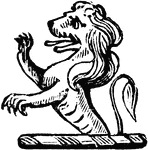
Lion Crest
"The English crest is a crown surmounted by a lion statant guardant crowned, or. CREST. The ornament…
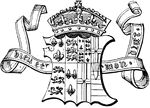
Marshaling
Marshalling is the art of correctly arranging armorial bearings. Two or more coats of arms are often…
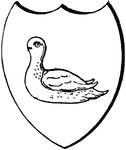
Martlet
A martlet is a heraldic charge depicting a mythical bird, similar in appearance to the swallow, but…

Mascle
A mascle is a voided lozenge-- that is, a lozenge with a lozenge-shaped hole in the middle-- and the…

Mitre
"MITRE. A sacerdotal ornament for the head, worn by Roman Catholic archbishops and bishops on solemn…
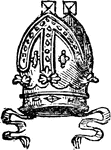
Mitre
"Mitre. A sacerdotal ornament for the head, worn by Roman Catholic archbishops and bishops on solemn…

Mitre and Crosier
The mitre is a type of headgear now known as the traditional, ceremonial head-dress of bishops and certain…
